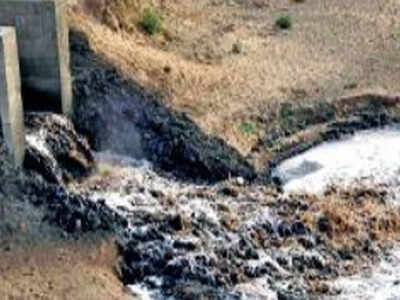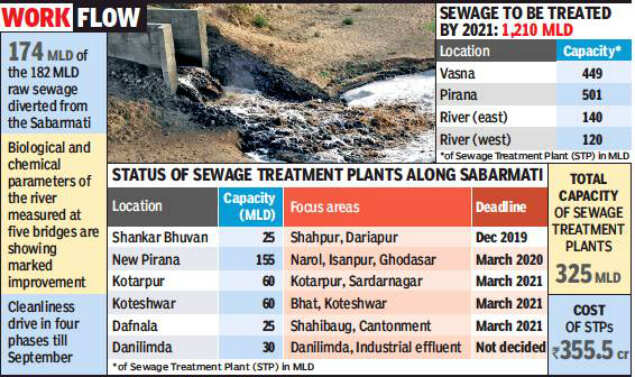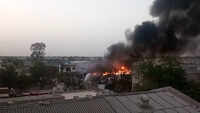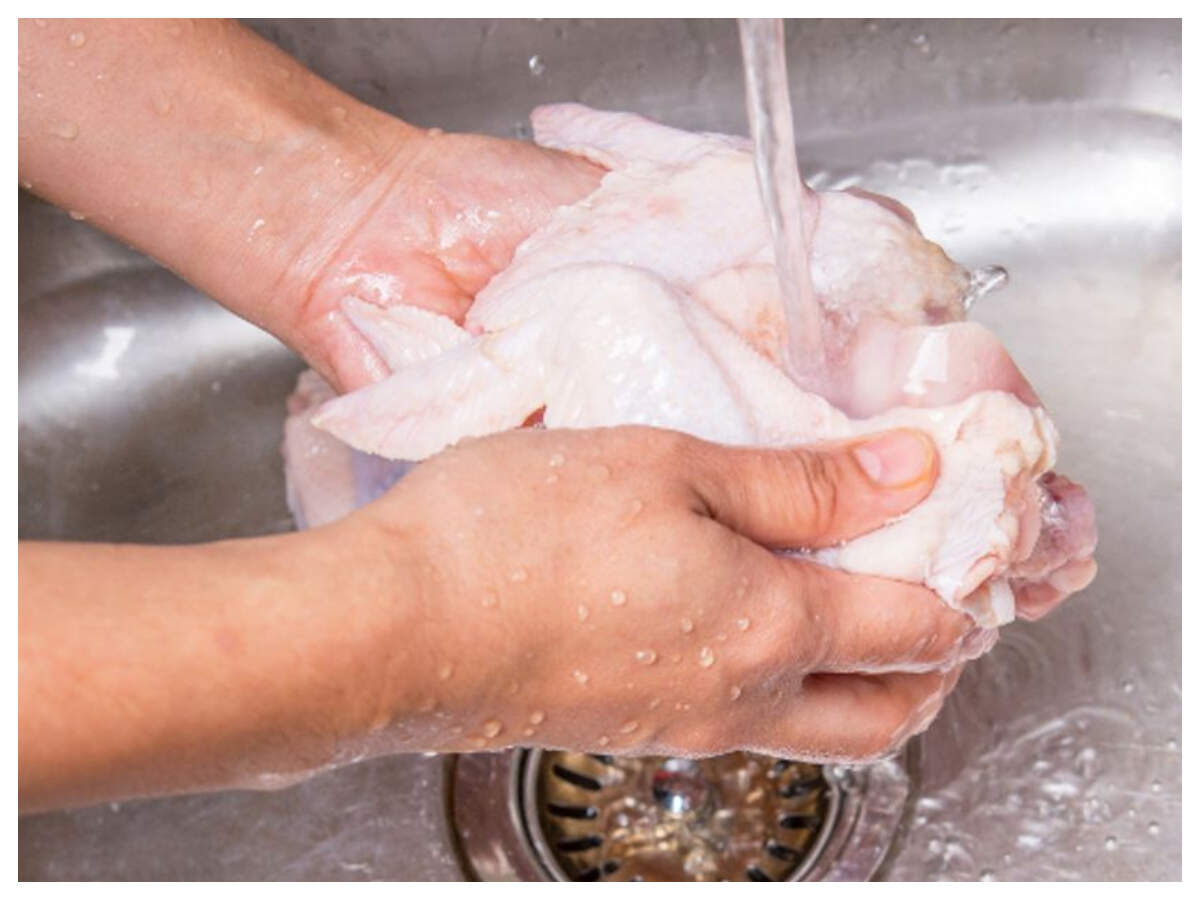
AHMEDABAD: Can we imagine Ahmedabad without the Sabarmati? The river that once nurtured a city and cradled the freedom movement led by Mahatma Gandhi today carries stinking sewage.
Till seven months ago, 182 million litres per day (MLD) of raw sewage used to course untreated into the Sabarmati from 40 stormwater drains. The civic body on Tuesday announced that it has managed to divert 174 MLD of sewage off the Sabarmati and only 6-8 MLD remains to be diverted. AMC commissioner Vijay Nehra said that the civic body will rid the river of its noxious load in four months and four phases. He said by October 2 — the 150th birth anniversary of Bapu — the river within the city will be free of sewage.

On June 5, chief minister Vijay Rupani will kick off a cleanliness drive in the presence of volunteers on the dry Sabarmati riverbed. But the millions of litres of deadly chemical waste that is let into the river downstream from the Vasna barrage remains a challenge. “That downstream area is beyond the AMC’s jurisdiction and remains with the GPCB,” Nehra said.
From October 28 last year, TOI had undertaken a vigorous 37-day campaign, ‘Riversutra’, highlighting the pollution in the Sabarmati and other Gujarat rivers. The series featured studies on microplastics and the increasing antibiotic-resistant bacteria in the Sabarmati. The latter crisis was brought to the fore by IIT-Gandhinagar’s earth sciences discipline.
The highest concentration of antibiotic-resistant bacteria was found at the ghats of Bapu’s Sabarmati Ashram. The cause was untreated sewage discharge from the Chandrabhaga drain. “In a fortnight, we will be diverting 6-8 MLD of raw sewage away from the river,” said Nehra. Over the past 10 days, four high-powered Varun machines have been pumping out dead water at the rate of 10,000 litres per hour from the Vasna barrage. Since May 14, near Subhash Bridge and Ellisbridge, 300 tonnes of garbage has been removed from the dry riverbed.
“Over the past couple of months, we have been installing interceptor lines and valves and enhancing pumping-station capacity,” Nehra said. “We have been able to divert millions of litres of raw sewage.”
Nehra cited the example of repairing the intersection of the interceptor line and drainage line at Dafnala which spewed 20 MLD of raw sewage following an overflow. Some dummy lines connected to manholes have been closed.
Till seven months ago, 182 million litres per day (MLD) of raw sewage used to course untreated into the Sabarmati from 40 stormwater drains. The civic body on Tuesday announced that it has managed to divert 174 MLD of sewage off the Sabarmati and only 6-8 MLD remains to be diverted. AMC commissioner Vijay Nehra said that the civic body will rid the river of its noxious load in four months and four phases. He said by October 2 — the 150th birth anniversary of Bapu — the river within the city will be free of sewage.

On June 5, chief minister Vijay Rupani will kick off a cleanliness drive in the presence of volunteers on the dry Sabarmati riverbed. But the millions of litres of deadly chemical waste that is let into the river downstream from the Vasna barrage remains a challenge. “That downstream area is beyond the AMC’s jurisdiction and remains with the GPCB,” Nehra said.
From October 28 last year, TOI had undertaken a vigorous 37-day campaign, ‘Riversutra’, highlighting the pollution in the Sabarmati and other Gujarat rivers. The series featured studies on microplastics and the increasing antibiotic-resistant bacteria in the Sabarmati. The latter crisis was brought to the fore by IIT-Gandhinagar’s earth sciences discipline.
The highest concentration of antibiotic-resistant bacteria was found at the ghats of Bapu’s Sabarmati Ashram. The cause was untreated sewage discharge from the Chandrabhaga drain. “In a fortnight, we will be diverting 6-8 MLD of raw sewage away from the river,” said Nehra. Over the past 10 days, four high-powered Varun machines have been pumping out dead water at the rate of 10,000 litres per hour from the Vasna barrage. Since May 14, near Subhash Bridge and Ellisbridge, 300 tonnes of garbage has been removed from the dry riverbed.
“Over the past couple of months, we have been installing interceptor lines and valves and enhancing pumping-station capacity,” Nehra said. “We have been able to divert millions of litres of raw sewage.”
Nehra cited the example of repairing the intersection of the interceptor line and drainage line at Dafnala which spewed 20 MLD of raw sewage following an overflow. Some dummy lines connected to manholes have been closed.
Quick Links
Lok Sabha Election Schedule 2019Lok Sabha Election NewsDelhi Capitals teamMI team 2019Rajasthan Royals 2019RCB team 2019Maharashtra Lok Sabha ConstituenciesBJP Candidate ListBJP List 2019 TamilnaduShiv Sena List 2019AP BJP List 2019Mamata BanerjeeBJP List 2019 MaharashtraPriyanka GandhiBJP List 2019 KarnatakaAMMK Candidate List 2019BJP List 2019 WBLok Sabha Elections in Tamil NaduBSP List 2019 UPNews in TamilLok Sabha Poll 2019Satta Matka 2018PM ModiMahagathbandhanNagpur BJP Candidate ListChandrababu NaiduTamil Nadu ElectionsUrmila MatondkarNews in TeluguMadras High CourtTejashwi YadavArvind KejriwalTejasvi SuryaPawan KalyanArvind KejriwalYogi AdityanathJaya PradaSatta King 2019Srinagar encounter
Get the app









